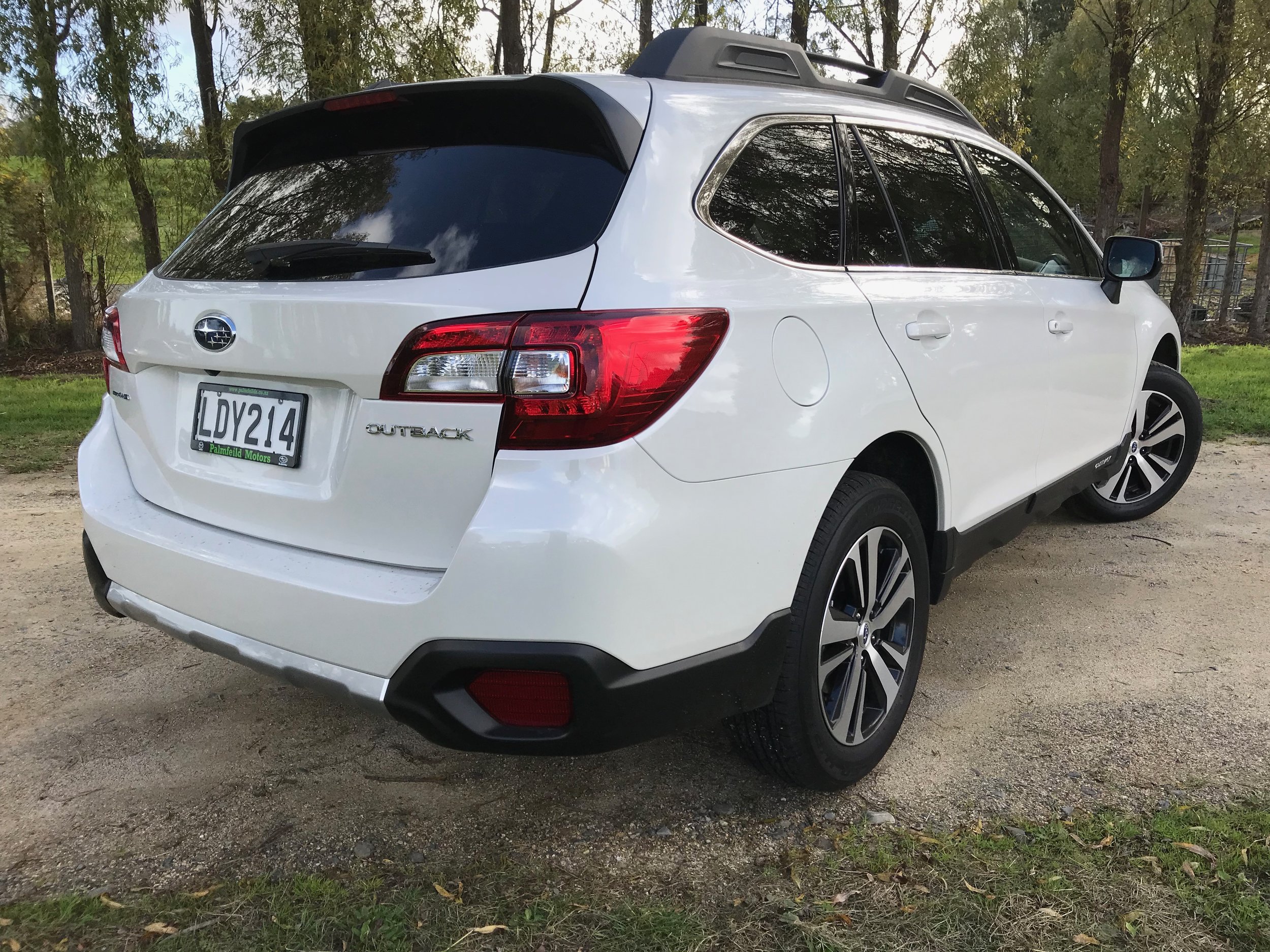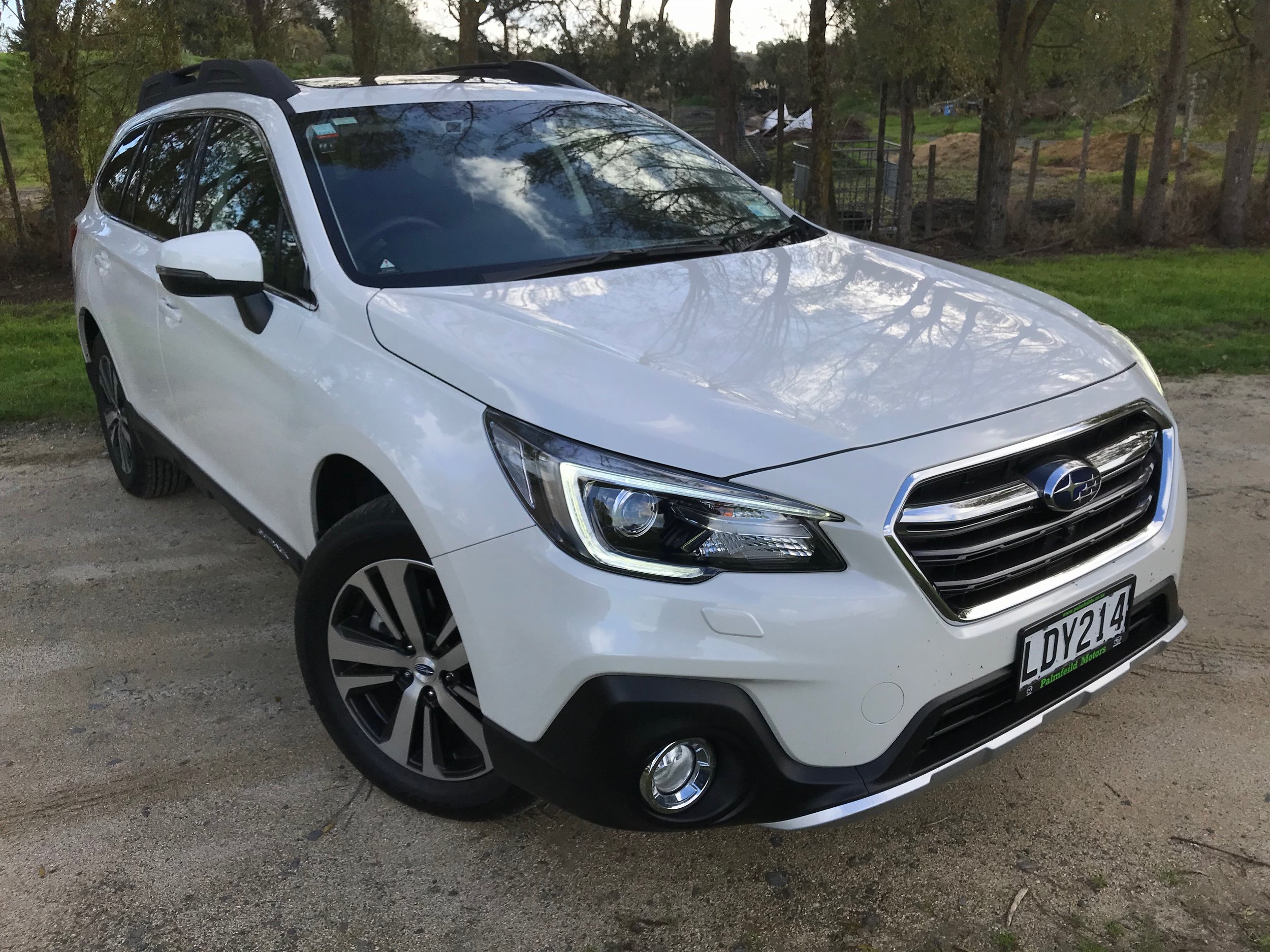Outback 2.5 Premium: Extra polish appreciated, and yet …
/The updated Subaru Outback is mostly better than its predecessor. But losing the diesel is a step back … and CVT instead of an orthodox automatic still niggles.





NOT liking the car you’ve chosen to own would seem oxymoronic, right?
And yet, the Subaru Outback as driven in its just updated 2018-year format actually still stood chance of losing favour when it came to me, for one very simple yet utterly salient reason.
The line-up now no longer contains the variant that claimed my hard-earned.
I’m one of those few who actually bought into the engine that could have, should have, been a big success for the brand here. Even though Fuji’s 2.0-litre turbodiesel was never the gruntiest in class, with just 110kW, it still had a lot going for it. Still does, in fact.
There’s no other four-cylinder Outback engine that’s ever generated more torque than this 350Nm unit, none that is as economical – I’ve actually seen, and occasionally bettered, the claimed optimal 6.3 litres per 100km combined cycle average – and none that works as satisfactorily in marriage with the Lineartronic constantly variable transmission, including when towing (which it’s better at, too, thanks to that fat wodge low-end torque).
Also, it’s an especially characterful version of a rather different kind of engine, and also properly unique. Just two car makers utilise horizontally-opposed powertrains and, out of those, only Fuji does a diesel.
Anyway, it all counted for nothing. The market wasn’t particularly interested and, so, the engine has been pulled locally. Not just from the Outback but also the Forester, including in its impending all-new format. Subaru NZ says they can always get it back, but there’s doubt they will. In the meantime, we’re running on petrol.
I’m not upset to be abandoned. Not really. But I do think that one day all those who didn’t take the chance will rue the day. Meantime, therapy helps.
So, anyway, here’s my dilemma. Having driven the latest one, I’m split.
The engine that is no longer provisioned, at least at showroom level, still holds my heart.
Yet my head says the new car has to be a better buy. It keeps all the stuff I enjoyed before and adds in some more kit, and capability, that I would wish my current drive had, but cannot be updated to. Not only that, but it does so for no increase in price.
How it is that Subaru here can implement every one of the key technologies and safety assists that have already gone to the Impreza and XV without so any dollar adjustment stuns me. Yet, fact is, the 2.5 Sport, 2.5 Premium driven and 3.6 Premium respectively continue at $44,990, $49,990 and $59,990.
It’s a slightly unsettling move for those who own the outgoing car – insofar that residuals will surely be hit just that bit harder – and yet also a canny one, in that it is surely certain to ensure Outback remains the top-selling Subaru going forward, regardless that this is a time when it faces an unprecedented count of rivals, one from within the family.
This is the year we will also see the new-generation Forester, the last Subaru to shift to a new-era platform that underpins all the other products sold here. It’ll slot into the medium sector, which is running hotter than any other. And yet I’d comfortably bet Outback will sell stronger, this year at least.
What I like about the new model is that it is obviously different to the pre-facelift item, yet not glaringly so. For sure, those who us with ability to line old and new side-by-side can straight away see that there’s a reworked grille and bumper design, wing mirrors designed to improve aerodynamics (and wind noise) and some new exterior colours. If the latest edition was presented in isolation, though, I’d doubt yet score 10 out of 10 on that one. Especially in respect to the mirrors. The shape is the same, it’s just that they place on stems 20mm shorter than before.
It’s much easier to pick what’s happened inside, which probably matters more anyway. The dominant difference is impossible to ignore. There’s a new tablet-style touch-screen conveying new functionality including the one I really miss having in my car, Apple CarPlay. There’s also Android Auto for those who are happy with second best.
It’s the latest-generation Subaru system we’ve seen in the the Impreza and XV and has a smarter look than the previous display, with gloss black panel surrounds and a silver frame, and much clearer graphics.
The Premium models now use TomTom sat nav with an improved format over the old system– there’s also the CarPlay option for those who don’t mind using their phone data.
The steering wheel, air-conditioning control panel and vents all have been updated, while the dash covering gains actual stitching and there’s more gloss plastic now, notably on the window switch surrounds.
There still some hard plastics in the cabin but they’re down in out of sight places. The spring-loaded cover for the central oddments cubby under the touchscreen has been redesigned, the aim being to ensure it is likely to stick in its ‘locked’ position – a major bugbear of the pre-facelift car. Actually, it needs more work because, as before, it needs to be struck just in the right place (dead centre, down low) but not quite at the base, with firmness but not a full-out jab, to make it release.
Across all Outback variants, Subaru has injected the third generation of its Eyesight safety suite, which brings optimised stereo camera images, the addition of lane keep assist, enhanced pedestrian avoidance and an extension of the car's automated emergency braking from 30 to 50kmh.
The safety suite works well even if it is a tad overzealous in its interventions; the lane departure warning can be very eager to remind the driver of vehicles in its proximity.
The Premium models also have new front-view and side-view monitors, along with an upgraded adaptive headlight package with steering-responsive lamps that automatically dip and activate high beam to avoid dazzling oncoming traffic.
Again, these were hugely sensitive. Our run home includes a steep dark hillside ascent beginning immediately after you drive under a rail bridge. On ‘sighting’ the reflective panels on the bridge abutment, the lights would dip – but remain so all the way up the hill, which is when I would have preferred being on high beam. You can over-ride, of course, but all the same …
The diesel and 2.5-litre petrol are so different that comparison really doesn’t wash. But, of course, you don’t have to worry about that now – the choice no longer exists.
Outback’s petrol choice also extends to a 3.6, but it’s the four-cylinder that commands the bulk of customer interest. The outputs are the same as previously, so 129kW of power and 235Nm of torque, but it’s not quite the same drivetrain as before.
The crankshaft, connecting rods and valves are redesigned to improve fuel use by reducing friction and the constantly variable transmission now features seven simulated gears instead of six.
It’s a smooth and refined powertrain, but no powerhouse: The outputs are adequate for both city and highway driving but the 0-100kmh time of 10.2 seconds relates how this engine operates. It’s lazy down low and only starts to wake up once the revs climb above 2500rpm. It is more revvy and sounds more interesting than the diesel but doesn’t always feel as strong; drive some rival product and you find more immediate zest.
This isn’t just a pure powertrain problem. The Constantly Variable Transmission that Subaru now uses exclusively with all its cars on sale here is just as love-or-loath it. I’m kinda on the fence; my traditional view is that it works better with the diesel than any of Subaru’s petrols, but I’d also agree that in purely petrol environment, the 2.5 is potentially the smarter accomplice in terms of smoothness of operability.
All the same, regardless that Lineartronic is a better kind of CVT, too, it’s not as good as a trad auto, and the degree in which you’re prepared to put up with its quirks is probably the one factor that will decide buy-in.
CVTs do allow potential for good economy, if you’re driving for fair distances at constant speed. The claimed 7.3 litres per 100km optimal economy for this model is within reach. So, if you’re using this car more as a station wagon with SUV benefits – which is how it works in my life – then the CVT is fine enough.
On the other hand, what if you want more from it? Even though I’ve driven Outbacks off-seal and found them fine with it, a CVT stands at risk of seeming a strange choice for every aspect of the semi-serious off roading that this car has been historically capable of, because sometimes it’s good to be able to have a proper gear to hold a car into.
Towing is another area that I’m slightly nervous about. My own Outback is used to haul my MX-5 race car when we head to the local track (Manfeild); it copes well with hooked-on load generally hovering around the 1200kg mark, plus a full boot, but I do tend to prefer to be quiet on the throttle and to handshift it off the line, to avoid any potential of shift shock. The petrol, being less torquey, might not do this so comfortably. I’d have liked to have found out – the dates aligned perfectly with a race meet – but, unfortunately, the test car was not provisioned with a tow hook.
The rest of the driving is great. I’m a big fan of how the Outback has a relaxed, lolloping approach to driving: The slightly soft suspension tune and, yes, the powertrains’ laidback attitude certainly colour how you drive it. There’s a sense that, while it won’t be always be the fastest from A to B, it might generally stand out as one of the least demanding and more comfortable choices.
The update adds more polish, not through any radical re-engineering but more as result of the combined effect of a host of smaller, yet wholly useful, incremental revisions.
Changes to the car's shock absorber settings, steering and acoustics are noticeable. At 1713kg, it still feels its size through the bends, and also retains its famously cushioned ride, but now sits marginally flatter through the corners than before and its electric power steering seems offer more meaningful feel and feedback. Ad before, you’ll maintain utmost confidence when venturing onto unsealed roads.
It’s here where this car's overall surefootedness and composure shines brightest; that all-wheel-drive advantage is no marketing puffery. The stability control suite is quite relaxed on gravel, progressively allowing the car to move around before intervening. An X-Mode driving system is also fitted as standard, bringing a hill descent control function and added traction for low speed. It’s no Land Rover yet is utterly excellent in any environment when potential for poor grip exists. It’s far more capable than you might imagine.
Aside from this, I’m pleased to see that none of the practicality that wins me over has diminished. The thing about the Outback is that it is so massively useful. There’s no a lot of flash, just heaps of sensible functionality. Those rails along the roof that conveniently fold out to double as roof racks in a matter of seconds are great examples of this brand’s cleverness.
True, it could do with a bit more thought when it comes to the boot design. There’s no shortage of space, with the standard-fit power tailgate opening to reveal a spacious 512 litres behind the second-row seats, and expanding to nearly four times that for 1848L when folded (made easy via a couple of boot-mounted levers).
Yet while some of the oddment provision under the foot is welcomed, it’d be better if they could also engineer some sidewall cubbies and a maybe a rollout cargo net, or fold up dog barrier mesh off the luggage cover. A lot of Outback owners very likely have dogs yet Subaru doesn’t consider us as well as well as it could. The rear quarters will likely suffer without protection. Failing to get anything locally, I went to a US supplier to find a really excellent canvas cover that fits snugly into the whole area to keep hair and mud tarnishing the trim. Brilliantly, it also has a rollout mat that covers the bumper top which my canines use as a step. You’d think Subaru would offer this stuff itself or, at least, have engineered in a robust claw-resistant padding, rather than provide a painted surfaces that is too easily scuffed.
Provision for humans is better. Spatially, the Outback offers room from five adults in relative comfort on long journeys, each with access to a slew of incidental storage and USB points. The car's broad 1.84-metre girth comfortably enables three abreast from the rear, while leg room and head room numbers are generous.
Obviously, I’m somewhat undone by my emotional investment into the Outback. I like the concept of the car to the point where, even though some aspects of the latest model do not totally appeal, overall I’d be happy to keep on with it. But the day Subaru gives up on CVT and reverts back to an orthodox transmission will be a good one.















